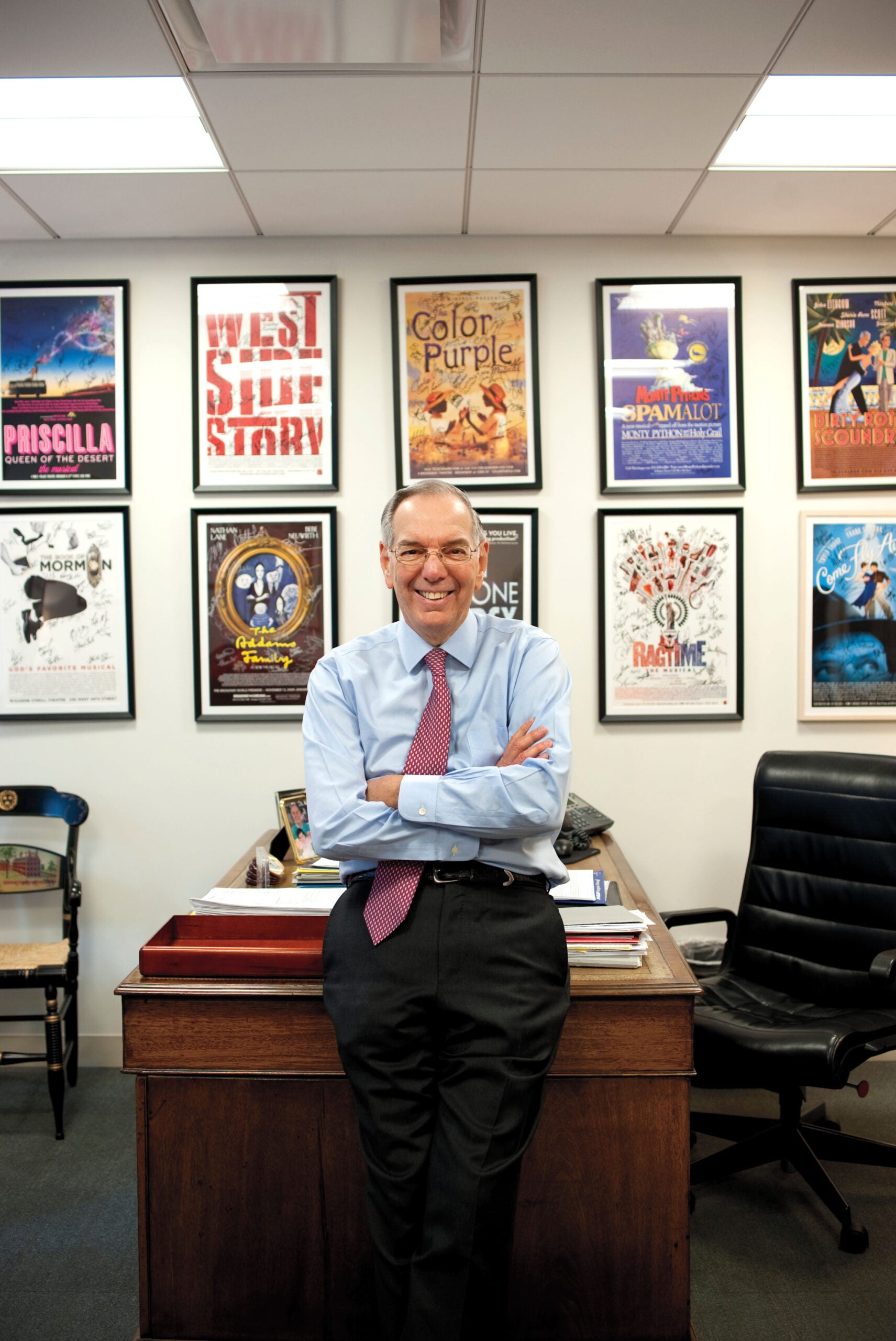Roy L. Furman ’63 is vice chairman of Jefferies & Company and chairman of Jefferies Capital Partners, a group of private equity funds. In 1973, he co-founded Furman Selz, an international investment banking, institutional brokerage and money-management firm, where he served as president and CEO until 1997, when the firm was sold to ING. Among his other positions, he is vice chairman of Lincoln Center for the Performing Arts and chairman emeritus of the Film Society of Lincoln Center. He has produced five Tony Award-winning plays and musicals on Broadway and currently has five shows running. He served as national finance chairman for the Democratic National Committee in 1992-1993 and is former chairman of the HLS Fund. Furman established a professorship at HLS this year, which is held by Lawrence Lessig.
Jefferies & Company was named this year by Fortune as “one of the world’s most admired companies.” What sets it apart?
Jefferies is distinguished by the fact that while it is a large, rapidly growing global bank with a comprehensive range of financial services, it is still run with an entrepreneurial spirit. The firm is not bureaucratic, cross-sector participation is encouraged, and almost all layers of management are actively involved in the investment process. It’s a wonderful atmosphere for intelligent and creative talent.
How did your HLS education lead you into investment work?
I practiced for a few years before determining that my mind was better suited for Wall Street, where I found the absence of precedence was a positive. But the law school had taught me to think and to anticipate problems where none seemed apparent, and I trace my success as an analyst to the rigor of my HLS education. I still maintain that law school is a better training ground for Wall Street than business school, but I am no doubt prejudiced.
How did you become a Broadway producer?
I became a Broadway producer incrementally, without any long-term expectations. Decades ago, my wife and I began investing small amounts in individual shows. As the dollars increased, so did my involvement, until I proceeded to ask for a seat at the table as a producer. Ultimately, I became more active. It’s a most exciting business because it’s live, which magnifies every problem and every success. Each performance is different, audiences impact the artists, actors get sick, weather affects grosses—in other words, there is a constantly challenging environment.
Of the plays you’ve produced, which is your favorite?
I am most proud to have been co-lead producer of “The Color Purple.” This was a musical that all the experts “knew” could never succeed because African-Americans were a minor proportion of Broadway ticket buyers, and it was common knowledge that white audiences would not be attracted to a distinctly African-American story. The show proved to be a major commercial success on Broadway and the road and is currently in its sixth year of performances. My favorite show as a co-producer has to be “The Book of Mormon.” It, too, was an unlikely candidate for anything more than a specialized success, and has turned out to be the biggest hit on Broadway in over a decade.
Is there a highlight of your Broadway association?
It’s been thrilling to develop personal relationships with the great creative talents and performers who populate the shows I am involved with. One of my most memorable moments came while we were rehearsing “The Color Purple.” My co-lead producer and I received a call from Oprah Winfrey, who wanted to meet with us in Chicago. In the media world, that is akin to being invited to the White House—one simply does not turn down such an invitation. The Chicago meeting led to Oprah’s joining our team as a named producer, which subsequently led to a surprise visit to see the cast rehearsing. When we called them together to explain we were adding another producer, they couldn’t have been less interested—until the door opened and Ms. Winfrey stepped inside. Only a winning touchdown in the last minute of a Super Bowl could match the pandemonium that erupted in the rehearsal studio, all of which was filmed and featured on a subsequent “Oprah” show.
How is HLS today different from when you were a student?
The Harvard Law School of today bears no resemblance to the Harvard Law School I attended in the early ’60s, aside from the extraordinarily high level of intellect and skill manifested by the professors and students. “My” Harvard Law School had limited course selections, autocratic teaching, a homogeneous student body, and little warmth or personality. It was seen as a trade school for the best minds in the country, and miraculously, some of those minds were actually found to be female (there were 17 in the class). How I’d love to attend today’s HLS. The curriculum has expanded geometrically; the professors are more involved with, and devoted to, the students; and women and minorities have their rightful place in the student population.
What lasting impact has HLS had on your life?
One of my learnings throughout an extensive career has been that no matter what experience or success I have had, my HLS background has always been the great validator. Early on, I felt this validation, which was especially meaningful as a young Wall Street analyst and banker, would become less significant as I succeeded in business, but such was not the case. Being an HLS graduate has never stopped being meaningful. In certain ways, it’s a defining element, and that special branding remains with you forever. It’s one of the prime reasons I am so passionate about HLS—I can never thank the school enough for what it gave me, and I believe it’s vitally important to sustain the great academic institutions in this country. In that vein, I am proud to have been able to establish a chair at Harvard and even more pleased that the first recipient is the illustrious Larry Lessig.
